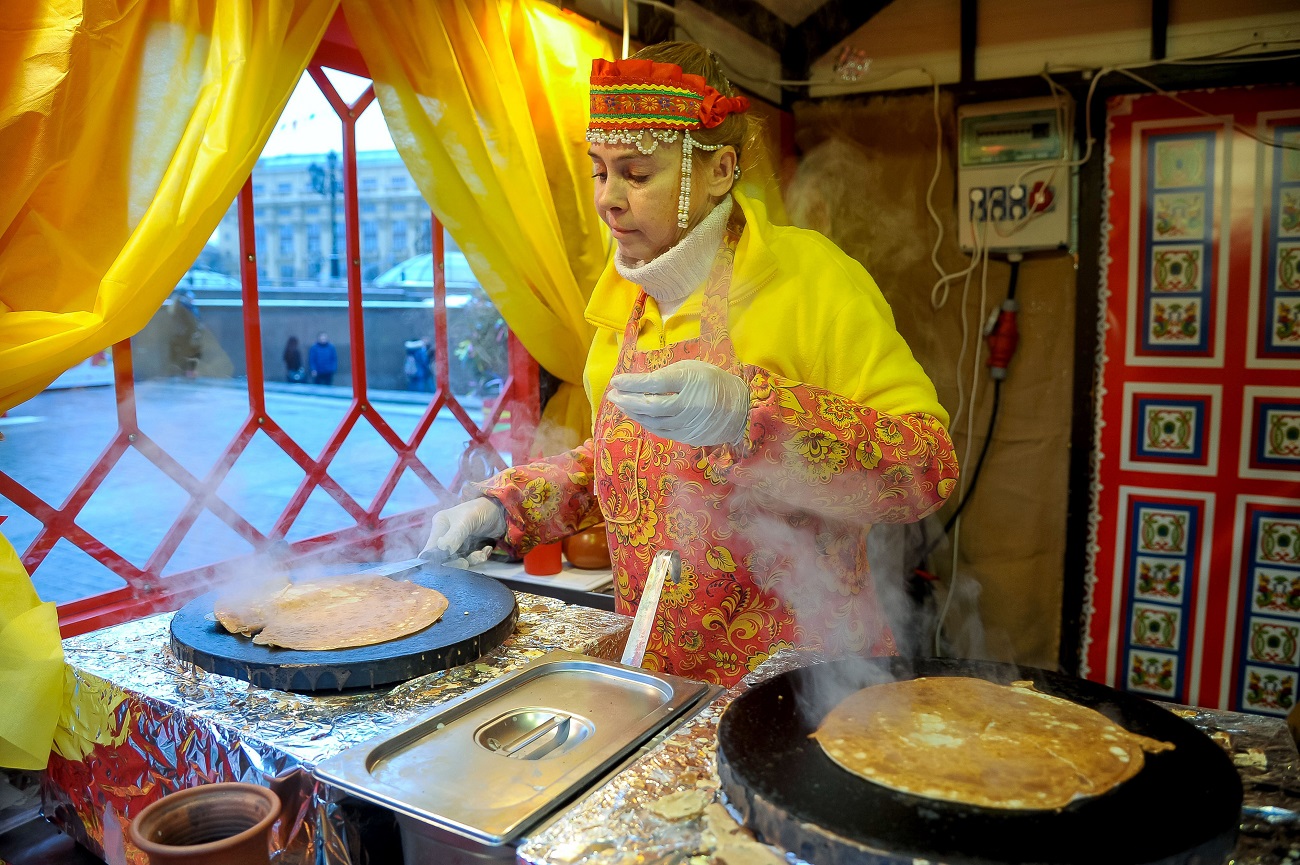Adventures in the Slavic Kitchen: Pancake week

Maslenitsa festival in the center of Moscow.
Moskva Agency / Avilov Alexander***
Maslenitsa (Shrovetide), Blin!
[The word blin is the Russian equivalent for the soft English expletive “sugar”.]
Our Maslenitsa is a sister of European Carnival, a similar pagan, pre-Christian festival of the banishment of winter (not the season of the year but the embodiment of the death of nature). Orthodox Christianity transformed Maslenitsa into one part of the swing’s amplitude – which through the revelry of Maslenitsa festivities and the ensuing Forgiveness Sunday is capable of throwing the congregation straight into Bright Monday, the beginning of Great Lent, and to remind the rest of the people how important it is for every family at least a few times a year to bake pirozhki pies and make bliny so that our children would not grow up to be freaks of nature.
The pan for making the bliny (if you do not have one especially designated for this purpose) must be thoroughly rubbed with large grain salt mixed with butter, heated, and oiled with vegetable oil (you can use a halved onion or a tight wick for this purpose, but to everything else I prefer a cube of salo on a fork; it is non-canonical but effective). The sponge dough (with sugar, salt, milk, water, whipped eggs, and various oils), after it is “brought down” a couple of times, should have a liquid quality like a thin sour cream. The bliny are fried no more than 1 minute on each side, then they are stacked, buttered, and served hot or at least warm (never serve cold bliny, there is nothing worse in culinary art than wasted work). Those who are apprehensive about yeast or the word “sponge dough” or anything like that, may simply add the flour to kefir, and even these bliny, simplified but prepared with feeling and understanding come out tender and tasty.
Mushroom sauce for the bliny is prepared as follows: in a deep frying pan or sautй pan fry finely cut champignon mushrooms and lightly sautйed onions for 10 mins. Add chopped garlic, greens, salt and pepper, pour sour cream over the mixture and sautй covered, on low heat, for about 15 min. Put the cooked sauce into a bowl and either spread it over or spoon it onto a blin; roll the blin and eat it. Or you can dip the blin into your own personal bowl. At home no one will criticize you for doing it, but the process is more convenient and tastier with the use of a knife and fork.
If using any of Russia Beyond's content, partly or in full, always provide an active hyperlink to the original material.
Subscribe
to our newsletter!
Get the week's best stories straight to your inbox